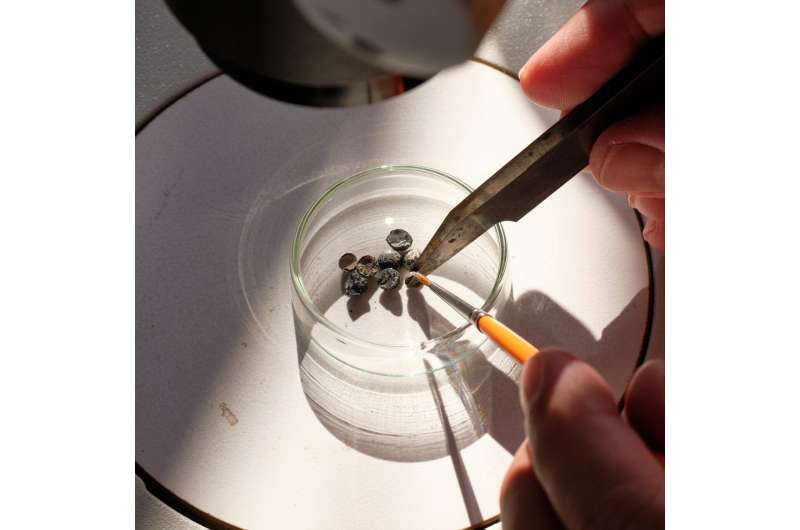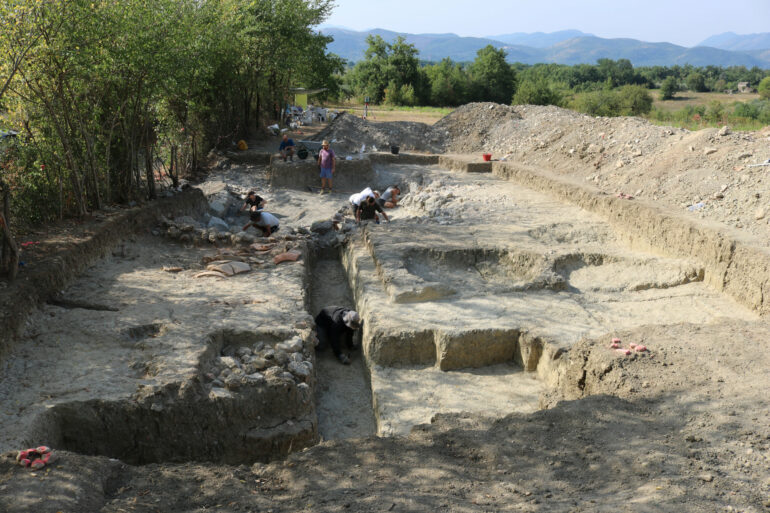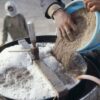From 22 July to 19 August 2024, a team of researchers from the Leibniz-Zentrum für Archäologie (LEIZA) and the University of Trier investigated the remains of the late Republican city of Fregellae in present-day Italy to better understand the social and economic fabric of the region before and after its destruction in 125 BCE.
Investigations of the oldest villa in the area and a Roman military camp outside the city show that the attack also ruined the economic basis of the local inhabitants’ livelihood. As a result, the region remained uninhabited for more than 170 years.
This year, work focused on a villa with an agricultural production facility and the further development of a Roman military camp that was built during the siege of the city.
The villa, which belonged to the local elite, is the oldest of its kind discovered in the region to date. It was built about 80 years before the destruction of Fregellae. “It’s fascinating that we were able to uncover the architectural structure of such an early production facility,” explains Prof Dr. Dominik Maschek, project manager at LEIZA.
“Despite the traces of fire and the almost complete removal of the building materials, the finds offer valuable insights into rural life and the economic activities of the inhabitants at the time.”
Archaeobotanical investigations and finds of amphorae and storage vessels prove that wine, fruit and grain were produced in the complex. “The wine was probably not only produced for the local market. It is quite possible that it was traded within Mediterranean exchange networks as far as Spain and France. The cultivation of grain and fruit, on the other hand, was certainly intended for the local market,” explains Maschek.

Archaeobotanical analyses of seeds and plant remains provide information on the cultivation and trade of wine. © LEIZA / Anton Ritzhaupt
The obliteration of the site by the Roman army not only meant the end of this production site, but also the loss of the livelihood of its inhabitants. Maschek adds, “The violent destruction caused lasting damage to the entire economy of the region. The landscape remained uninhabited for over 170 years until the area was finally used as a rubbish dump. We have found numerous ceramic vessels dating from around 50 CE.”
In addition to the work on the villa, the researchers have also further investigated the military camp identified last year. The camp, built for the siege of Fregellae, covered an area of 90 x 143 meters and was surrounded by a rampart and a ditch. The investigations support the previous findings on Roman military strategy and siege tactics. “This new information consolidates our picture of the Roman siege in 125 BCE,” explains Maschek.
The agricultural production site and the surrounding cultural landscape provide archaeologists with important clues as to the extent of the destruction and the consequences of the Roman campaign against Fregellae. This year’s finds make a decisive contribution to understanding the changes within the surrounding cultural landscape after the attack.
Next year, the rich finds from the excavations will be further investigated and analyzed with the aim of reconstructing the effects of war and conflict on the cultural landscape, from the destruction of 125 BCE to the fighting of World War II.
Project information
The research project, “A Landscape of Conflict: Battlefield Archaeology in Territory of Ancient Fregellae / Modern Arce, Ceprano, and San Giovanni Incarico,” has been led by Maschek since 2015.
The archaeological investigations at the excavation site, located about 100 km from Rome, reconstruct the Roman military assault on the once flourishing city of Fregellae. Remains of wall paintings, sanctuaries, atrium houses, floor mosaics and public baths in the city center provide clear evidence of deliberate destruction.
The main aim of the research project is to find out how such sieges in the Roman period affected the urban hinterland and what degree of damage the surrounding cultural landscape suffered in the case of Fregellae.
Provided by
Leibniz-Zentrum für Archäologie (LEIZA)
Citation:
Archaeological excavation in ancient Fregellae reveals the end of a cultural landscape (2024, September 17)



